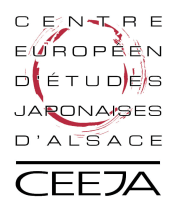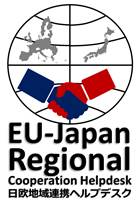Japan cooperation
You will find in this section the historical aspects allowing to understand from the origin to our days the relations between Alsace, Lorraine, Champagne-Ardenne and Japan. You can directly access the section that interests you by clicking below:
Alsace/Japan, a long history - Lorraine/Japan - Champagne-Ardenne/Japan
Alsace/Japan a long history
The origin of relationships
Alsace was one of the very first regions of Europe to have direct relations with Japan, in the second half of the nineteenth century. It was then that, after centuries of being closed to foreign countries, Japan decided to open up to international contacts and join the circle of the most advanced nations.
To do this, the Land of the Rising Sun then undertook to build an industrial economy. But even before having their own factories, some Japanese businessmen turned to Europe to manufacture products for their domestic market, using the most advanced techniques of the time.
It is in this context that, from 1863, the first contacts were made with the Alsatian textile industry, and particularly Mulhouse, then world leader in the field, to have fabrics with Japanese motifs printed in our region for the Japanese market. These fabrics arrived in Japan in 1864.
These exchanges lasted several years and were important not only economically, but also in the field of art. Indeed, the drawings sent from Japan to Alsatian printers were among the first documents which allowed the European public to discover the universe of Japanese forms, a discovery which had important repercussions on European art and on the genesis of Impressionism and of Modern Art.
These contacts continued in various fields until our time, making Alsace a privileged partner of Japan in Europe. Alsace was one of the first regions to open a regional representation office in Japan in 1982. In 2023-2024, Alsace will celebrate the 160th anniversary of relations between Alsace and Japan.
Japanese panel
Belfort, Manufacture Charles Steiner
Designers Arthur Martin and Coudeur
Adrianople red dyed twill
Color block printing of overprint and gold removals.
Museum of Printing on Fabrics)
Source: Impressions of the Rising Sun: 150 years of Alsace-Japan relations
MISE / CEEJA, ID Editions
From the origins to the present day
From the first exchanges in 1863, contacts continued in various fields until our time, making Alsace a privileged partner of Japan in Europe. They even engendered in Alsace a fashion for Japan, which resulted in particular in the constitution of important collections of works of art and Japanese objects, still present in Alsatian museums.
This relationship never ended. From the end of the nineteenth century, many Japanese students came to attend the University of Strasbourg. In 1925, the future Emperor Shôwa came to visit Alsace as crown prince.
Thereafter, particularly during the last thirty years, relations intensified, both on the economic level, with numerous Japanese investments in Alsace, as well as on the cultural and academic level. Artists regularly visit Alsace. Thus, Miyazaki Hayao, for his film Hauru no ugoku shiro (The Howl's Moving Castle) chose Alsace, and particularly the City of Colmar and the Maison Pfister, as the setting.
The creation of a Department of Japanese Studies at the University of Strasbourg in 1986, then that of the European Center for Japanese Studies in Alsace in 2001, or even the Maison Universitaire France-Japon and the Consulate General of Japan in Strasbourg, also demonstrate the strength of the ties between our region and Japan. In 2022 the Consulate General of Japan in Strasbourg celebrates its 30th anniversary.
The opening of the 150th anniversary of Alsace-Japan relations took place in March 2013 at the CEEJA, in the presence of the Japanese Ambassador to France. A message from Mr. Hieda Hisachi, president of Fuji TV, was read for the occasion, highlighting the collaboration of Alsace and Fuji TV for the filming of the television series "Under the blue sky of Alsace", in 1985 This television series, produced under the direction of Mr. Hieda, was a great success and made our region better known to the general Japanese public.
Japanese kimono sample set
France, Mulhouse, Manufacture Thierry Mieg & Cie, 1863
Block print on wool muslin
Museum of Printing on Fabrics)
Source: Impressions of the Rising Sun: 150 years of Alsace-Japan relations
MISE / CEEJA, ID Editions
"Drawing in homage to Alsace-Japan relations, produced by the artist Sookyung Yoo on the occasion of the exhibition "L'univers du shôjo manga",
organized by the CEEJA and the Department of Haut-Rhin in cooperation with the Kyôto International Manga Museum and the Kyôto Seika University International Manga Research Center, in February 2019 in Colmar and Altkirch."
Current Alsace/Japan relations
This long history of cooperation with Japan, which has never stopped since 1863, has legitimized the creation of several structures which demonstrate the strength of the links between Alsace and Japan.
- A Department of Japanese Studies at the University of Strasbourg in 1986, which currently has 23 cooperation agreements with Japan.The Consulate General of Japan in Strasbourg in 1992The European Center for Japanese Studies in Alsace (CEEJA) in 2001 The France-Japan University House in 2001
For more than 20 years, the CEEJA has been developing and coordinating cooperation with Japan in all areas: economy - innovation - research - training - culture - tourism. This global dimension is unique in Europe.
In the field of culture, innovative projects in Europe are given priority, including the project for the European Museum of Manga and the European Library on Japan carried out by the CEEJA, which has one of the largest documentary collections (history, society, economy and industry, with no less than 135,000 documents) and several collections of works of art.
In 2020, the CEEJA also contributed to the launch of the first regional Alsace Christmas markets in Japan and prepared the start of future major tourism projects with the Japanese tour operator “Club Tourism International Inc.”.
Many cooperation agreements between Japanese and Alsatian local authorities have also been signed:
- Strasbourg/KagoshimaAlsace/Department of Gifu Alsace/Department of IwateAlsace wine route/Sake route - Hida Colmar/Takayama Riquewihr/Shirakawagô
Champagne-Ardenne/Japan
In October 2017, Reims became the 6th twin city of Nagoya (department of Aichi). At the origin of the links between the two cities, is Tsugouharu Foujita.
The head office
1 rue Camille Schlumberger 68000 Colmar
Phone: 33 (0)3 68 61 09 06
ceeja@ceeja-japon.com
Incubator
Maison Pfister
11 rue des Marchands 68000 ColmarCorps de Garde
17 Cathedral Square - 68000 Colmar
Japan Office
Nagoya
Phone: 81 90 2776 5010
j.goto@ceeja-japon.com
EJRC Helpdesk - Bureau Europe
CCI Service International Grand Est
10 Place Gutenberg
67000 Strasbourg
ejrc@eu-japan.eu









